Acwa Power widens equity gap in power developer league
2 October 2023

The equity gap between Saudi utility developer Acwa Power and the other private utility developers in the GCC region has continued to widen, according to MEED’s annual GCC power developer ranking.
Acwa Power’s net capacity reached 13,340MW. This has doubled its lead to 67 per cent over France’s Engie, whose net capacity of 7,987MW has remained unchanged.
Over the past 12 months, power-purchase agreements were signed for six solar independent power producer (IPP) projects, as well as for a multi-utility public-private partnership contract and a cogeneration plant.
The seven contracts have a total combined power generation capacity of more than 8,000MW.
Acwa Power gained more than 2,900MW in net capacity over this period. This was due in large part to a 35 per cent equity share in the 2,060MW Shuaibah 2 solar power project and a 50 per cent shareholding in each of the Saad 2, Ar-Rass 2 and Kahfah solar photovoltaic (PV) projects.
These contracts were procured by the kingdom's Public Investment Fund (PIF) through the Saudi renewable energy price discovery scheme.
Notably, the 600MW Shuaibah 1 solar IPP scheme, which was publicly tendered and awarded to an Acwa Power-led consortium under the second round of the National Renewable Energy Programme (NREP) in 2021, has been combined with the PIF’s Shuaibah 2.
Under the final scheme, which reached financial close this year, Acwa Power’s shares in Shuaibah 1 decreased from 50 per cent to 35 per cent. The shares of its partners Gulf Investment Corporation and Al-Babtain, which originally maintained 30 per cent and 20 per cent, respectively, have been bought by PIF subsidiary the Water & Electricity Holding Company (Badeel) and Saudi Aramco Power Company (Sapco).
As with Engie, the net and gross capacities of Japanese firms Marubeni, Mitsui, Sumitomo and Jera also remained unchanged, with no new contract wins in the period.
Ranked 10th in the previous year’s listing, France’s EDF rose three spots this year to claim seventh place, which was previously held by Korea Electric Power Corporation (Kepco).
EDF’s rise came as a result of winning contracts for two major schemes. It was selected together with South Korea’s Korea Western Power Company (Kowepo) to develop Oman’s 500MW Manah 1 solar IPP project, and was also awarded a multi-utility contract with the UAE’s Abu Dhabi Future Energy Company (Masdar) for the Amaala development in Saudi Arabia, which includes a 250MW solar power farm.
EDF overtook Kepco despite the South Korean firm’s successful bid for the Jafurah cogeneration plant, where it maintains a 60 per cent equity. The scheme’s power generation plant has a capacity of 320MW.
Singapore’s Sembcorp and China’s Jinko Power, which comprise the team that won the Manah 2 solar IPP contract in Oman, occupy the ninth and 10th spots, respectively.
Saudi utility developer Aljomaih Energy & Water Company relinquished its 10th spot last year.
 Power tariffs have scope to improve
Power tariffs have scope to improve
A different view
Saudi Arabia’s renewable energy price discovery tool is becoming a potential game-changer for the competitive landscape of GCC power developers.
It allows Acwa Power to submit a proposal to match the most recent prices obtained through each round of the NREP public tendering process, which is overseen by the state-backed principal buyer, Saudi Power Procurement Company (SPPC).
Under the price discovery scheme, the PIF will only invite other developers to bid for a contract if Acwa Power fails to match prices achieved through the public tenders.
Acwa Power has so far won all five of these contracts, which have a total combined capacity of 8,110MW.
Since the PIF is tasked with procuring 70 per cent of Saudi Arabia’s 58,700MW renewable energy capacity target by 2030, the Saudi sovereign wealth vehicle is expected to procure a further 32,000MW of renewable capacity over the coming years using the price discovery scheme.
Given the scale of the PIF’s programme, and the extent to which it has expanded Acwa Power’s renewables portfolio this year, a separate league table that includes only IPPs and independent water and power producer (IWPP) projects that have been publicly tendered, or simultaneously tendered to a pool of qualified private utility developers, offers interesting insights.
Excluding the PIF contracts reveals that the ranking of the private utility developers based on their net capacity – or the capacity commensurate to a developer’s equity shareholding in each power generation asset – is unchanged. Acwa Power remains at the top, with a total equity capacity of more than 9,800MW, compared to Engie’s nearly 8,000MW.
However, their gross capacity rankings reverse when the PIF contracts are excluded. Engie leads by 4 per cent in terms of gross capacity, or the total capacity of power plants that they are developing alone or with consortium partners.
Gas revival
No new gas-fired IPP or IWPP projects have been let in the GCC since 2021, when most principal buyers and utilities began to focus on increasing their renewable energy capacity in line with their countries’ decarbonisation agendas.
With the exception of the UAE's Fujairah F3 and Saudi Aramco’s Tanajib and Jafurah cogeneration plants, solar and wind power plants have accounted for the majority of private power generation capacity that has been procured since 2020.
This is set to change in the next 12-24 months as renewed demand for combined-cycle gas turbine (CCGT) plants is driven by the need to decommission old fleets that burn liquid fuel, or to replace expiring baseload capacity.
As of September this year, gas-fired power plants account for approximately 60 per cent of the GCC region's planned power generation plants that are likely to be awarded in the next 24 months, according to MEED research.
The bid evaluation process is under way for four gas-fired IPPs in Saudi Arabia with a total combined capacity of 7,200MW. These are the first gas-fired IPP schemes to be procured by the kingdom since 2016.
A further three IWPP schemes – Kuwait's Al-Zour North 2 & 3 and Al-Khiran 1 and Qatar’s Facility E – are in the procurement stage. These schemes have a total combined power generation capacity of 6,800MW.
Next year, SPPC is expected to begin the procurement process for two gas-fired IPPs: the PP15 in Riyadh and another in Al-Khafji. Each is expected to have power generation capacity of 3,600MW.
Abu Dhabi’s Emirates Water & Electricity Company (Ewec) is also expected to initiate the procurement process for two CCGT plants with a total combined capacity of 2,500MW before the end of 2023.
Renewable arena
The revival of gas-fired schemes will not necessarily come at the expense of renewables, however.
The region’s largest market has ramped up its issuance of solar and wind tenders over the past 12 months and is expected to sustain or even accelerate the pace of its renewables procurement.
Saudi Arabia needs to procure at least 43,000MW of renewable energy capacity through public tenders and direct negotiations over the next six years to meet its 2030 target. This equates to about 7,200MW a year – twice its current average.
Overall, the future strength of the market for private utility developers is ensured by a growing clientele in Saudi Arabia that includes Neom and its subsidiary Enowa, in addition to the utilities in the other five GCC states, and the large conglomerates and organisations that aim to build captive power plants.
A case in point is the 35,000MW of solar and wind energy projects are in the pre-development stage for Neom, which aims to be powered 100 per cent by renewable energy by 2030.
Abu Dhabi also plans to procure at least 1,500MW of solar PV capacity annually over the next 10 years, in line with its goals for decarbonising its electricity system.
Developers’ dilemma
A Dubai-based executive with one of the international developers active in the region says: “It has been a very busy year for us. If all of these plans come through in the next 12-24 months, it will be even busier.”
The executive is unsure whether all the planned gas-fired projects will materialise, however. “We have been here before, and some of these projects have experienced major delays in the past for reasons that are not even related to decarbonisation or net-zero targets.”
Given the GCC states' carbon emissions reduction targets and the recent easing of supply chain constraints, solar and wind IPPs appear to offer greater certainty for utility developers, many of which are also beholden to internal decarbonisation targets that include a reduction of their existing thermal fleets.
The contracts for five solar and three wind IPPs in the region are expected to be awarded soon.
Masdar has outpriced Acwa Power for the 1,800MW sixth phase of Dubai’s Mohammed bin Rashid al-Maktoum Solar Park project. A team of EDF and Kowepo has also submitted the lowest bid for the 1,500MW Al-Ajban solar PV IPP in Abu Dhabi.
In addition, SPPC has shortlisted bidders for two solar PV IPPs with a total combined capacity of 1,500MW under the NREP fourth round. It also expects to receive bids soon for three wind IPPs with a total combined capacity of 1,800MW.
Tenders for the NREP’s fifth round and Abu Dhabi’s fourth utility-scale solar PV farm are also expected imminently.
Exclusive from Meed
-
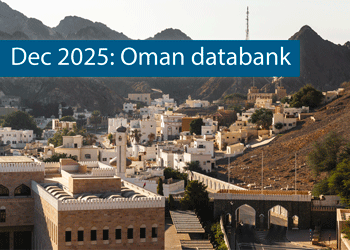 Oman’s growth forecast points upwards
Oman’s growth forecast points upwards24 December 2025
-
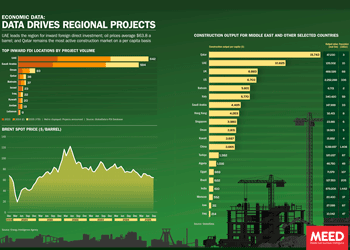 December 2025: Data drives regional projects
December 2025: Data drives regional projects23 December 2025
-
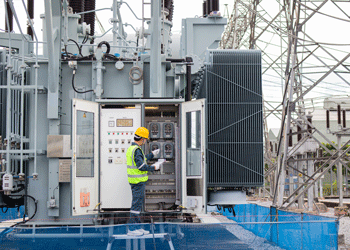 Local firm bids lowest for Kuwait substation deal
Local firm bids lowest for Kuwait substation deal22 December 2025
-
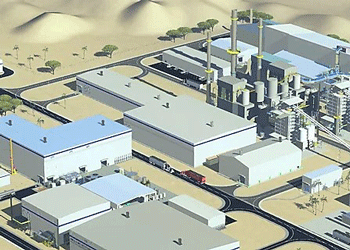 Saudi-Dutch JV awards ‘supercentre’ metals reclamation project
Saudi-Dutch JV awards ‘supercentre’ metals reclamation project22 December 2025
-
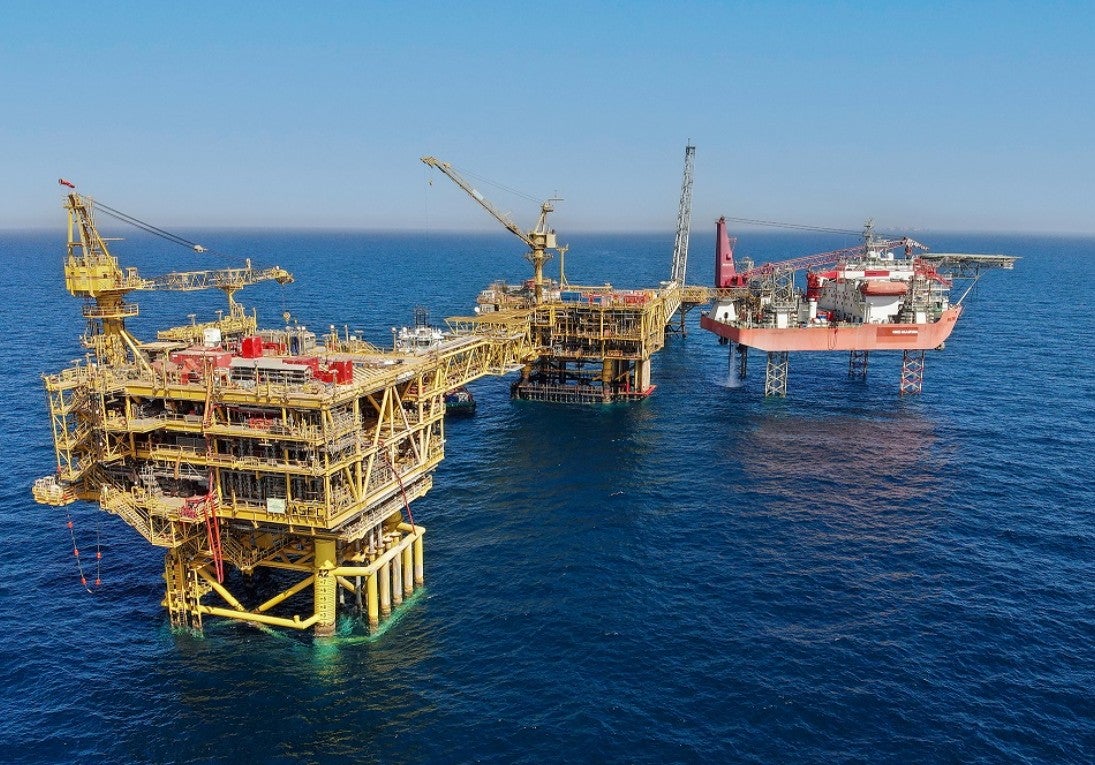 QatarEnergy LNG awards $4bn gas project package
QatarEnergy LNG awards $4bn gas project package22 December 2025
All of this is only 1% of what MEED.com has to offer
Subscribe now and unlock all the 153,671 articles on MEED.com
- All the latest news, data, and market intelligence across MENA at your fingerprints
- First-hand updates and inside information on projects, clients and competitors that matter to you
- 20 years' archive of information, data, and news for you to access at your convenience
- Strategize to succeed and minimise risks with timely analysis of current and future market trends

Related Articles
-
 Oman’s growth forecast points upwards
Oman’s growth forecast points upwards24 December 2025

MEED’s January 2026 report on Oman includes:
> COMMENT: Oman steadies growth with strategic restraint
> GVT & ECONOMY: Oman pursues diversification amid regional concerns
> BANKING: Oman banks feel impact of stronger economy
> OIL & GAS: LNG goals galvanise Oman’s oil and gas sector
> POWER & WATER: Oman prepares for a wave of IPP awards
> CONSTRUCTION: Momentum builds in construction sectorTo see previous issues of MEED Business Review, please click herehttps://image.digitalinsightresearch.in/uploads/NewsArticle/15306449/main.gif -
 December 2025: Data drives regional projects
December 2025: Data drives regional projects23 December 2025
Click here to download the PDF
Includes: Top inward FDI locations by project volume | Brent spot price | Construction output
MEED’s January 2026 report on Oman includes:
> COMMENT: Oman steadies growth with strategic restraint
> ECONOMY: Oman pursues diversification amid regional concerns
> BANKING: Oman banks feel impact of stronger economy
> OIL & GAS: LNG goals galvanise Oman’s oil and gas sector
> POWER & WATER: Oman prepares for a wave of IPP awards
> CONSTRUCTION: Momentum builds in construction sectorTo see previous issues of MEED Business Review, please click herehttps://image.digitalinsightresearch.in/uploads/NewsArticle/15306140/main.gif -
 Local firm bids lowest for Kuwait substation deal
Local firm bids lowest for Kuwait substation deal22 December 2025
The local Al-Ahleia Switchgear Company has submitted the lowest price of KD33.9m ($110.3m) for a contract to build a 400/132/11 kV substation at the South Surra township for Kuwait’s Public Authority for Housing Welfare (PAHW).
The bid was marginally lower than the two other offers of KD35.1m and KD35.5m submitted respectively by Saudi Arabia’s National Contracting Company (NCC) and India’s Larsen & Toubro.
PAHW is expected to take about three months to evaluate the prices before selecting the successful contractor.
The project is one of several transmission and distribution projects either out to bid or recently awarded by Kuwait’s main affordable housing client.
This year alone, it has awarded two contracts worth more than $100m for cable works at its 1Z, 2Z, 3Z and 4Z 400kV substations at Al-Istiqlal City, and two deals totalling just under $280m for the construction of seven 132/11kV substations in the same township.
Most recently, it has tendered two contracts to build seven 132/11kV main substations at its affordable housing project, west of Kuwait City. The bid deadline for the two deals covering the MS-01 through to MS-08 substations is 8 January.
https://image.digitalinsightresearch.in/uploads/NewsArticle/15305745/main.gif -
 Saudi-Dutch JV awards ‘supercentre’ metals reclamation project
Saudi-Dutch JV awards ‘supercentre’ metals reclamation project22 December 2025
The local Advanced Circular Materials Company (ACMC), a joint venture of the Netherlands-based Shell & AMG Recycling BV (SARBV) and local firm United Company for Industry (UCI), has awarded the engineering, procurement and construction (EPC) contract for the first phase of its $500m-plus metals reclamation complex in Jubail.
The contract, estimated to be worth in excess of $200m, was won by China TianChen Engineering Corporation (TCC), a subsidiary of China National Chemical Engineering Company (CNCEC), following the issue of the tender in July 2024.
Under the terms of the deal, TCC will process gasification ash generated at Saudi Aramco’s Jizan refining complex on the Red Sea coast to produce battery-grade vanadium oxide and vanadium electrolyte for vanadium redox flow batteries. AMG will provide the licensed technology required for the production process.
The works are the first of four planned phases at the catalyst and gasification ash recycling ‘Supercentre’, which is located at the PlasChem Park in Jubail Industrial City 2 alongside the Sadara integrated refining and petrochemical complex.
Phase 2 will expand the facility to process spent catalysts from heavy oil upgrading facilities to produce ferrovanadium for the steel industry and/or additional battery-grade vanadium oxide.
Phase 3 involves installing a manufacturing facility for residue-upgrading catalysts.
In the fourth phase, a vanadium electrolyte production plant will be developed.
The developers expect a total reduction of 3.6 million metric tonnes of carbon dioxide emissions a year when the four phases of the project are commissioned.
SARBV first announced its intention to build a metal reclamation and catalyst manufacturing facility in Saudi Arabia in November 2019. The kingdom’s Ministry of Investment, then known as the Saudi Arabian General Investment Authority (Sagia), supported the project.
In July 2022, SARBV and UCI signed the agreement to formalise their joint venture and build the proposed facility.
The project has received support from Saudi Aramco’s Namaat industrial investment programme. Aramco, at the time, also signed an agreement with the joint venture to offtake vanadium-bearing gasification ash from its Jizan refining complex.
Photo credit: SARBV
https://image.digitalinsightresearch.in/uploads/NewsArticle/15305326/main.gif -
 QatarEnergy LNG awards $4bn gas project package
QatarEnergy LNG awards $4bn gas project package22 December 2025
QatarEnergy LNG, a subsidiary of state-owned QatarEnergy, has awarded the main engineering, procurement, construction and installation (EPCI) contract for a major package for the second phase of its North Field Production Sustainability (NFPS) project.A consortium comprising the Italian contractor Saipem and state-owned China Offshore Oil Engineering Company (COOEC) has secured the EPCI contract for the COMP5 package. The contract value is $4bn, with Saipem declaring its share to be worth $3.1bn.
Milan-headquartered Saipem said the contract will run for about five years. The scope of work comprises engineering, procurement, fabrication and installation of two compression complexes, each including a compression platform, a living quarters platform, a flare platform supporting the gas combustion system, and the related interconnecting bridges. Each complex will have a total weight of about 68,000 tonnes.
Offshore installation operations will be carried out by Saipem’s De He construction vessel in 2029 and 2030.
MEED previously reported that the following contractors submitted bids for the NFPS phase two COMP5 package:
- Larsen & Toubro Energy Hydrocarbon (India)
- McDermott (US)
- Saipem/China Offshore Oil Engineering Company (Italy/China)
QatarEnergy LNG, formerly Qatargas, is said to have issued the tender for the NFPS phase two COMP5 package in the first quarter of the year.
Contractors submitted technical bids for the COMP5 package in late June, while commercial bids were submitted by 8 October, as per sources.
Based upon initial evaluation of bids by QatarEnergy LNG, L&TEH has emerged as the lowest bidder for the COMP5 package, followed by McDermott, with the consortium of Saipem and COOEC in third place, MEED reported in late October.
In the weeks following that, the project operator is said to have engaged all bidders for a final round of negotiations, during which the consortium of Saipem and COOEC is believed to have “clinched the deal”, according to sources.
The detailed scope of work on the COMP5 package covers the EPCI work on the following:
- Two gas compression platforms, each weighing 30,000-35,000 tonnes, plus jacket
- Two living quarters platforms, plus jacket
- Two gas flare platforms, plus jacket
- Brownfield modification work at two complexes
NFPS scheme
QatarEnergy’s North Field liquefied natural gas (LNG) expansion programme requires the state enterprise to pump large volumes of gas from the North Field offshore reserve to feed the three phases of the estimated $40bn-plus programme.
QatarEnergy has already invested billions of dollars in engineering, procurement and construction works on the two phases of the NFPS project, which aims to maintain steady gas feedstock for the North Field LNG expansion phases.
The second NFPS phase will mainly involve building gas compression facilities to sustain and gradually increase gas production from Qatar’s offshore North Field gas reserve over the long term.
Saipem has been the most successful contractor on the second NFPS phase, securing work worth a total of $8.5bn.
QatarEnergy LNG awarded Saipem a $4.5bn order in October 2022 to build and install gas compression facilities. The main scope of work on the package, which is known as EPCI 2, covers two large gas compression complexes that will comprise decks, jackets, topsides, interconnecting bridges, flare platforms, living quarters and interface modules.
The gas compression complexes – CP65 and CP75 – will weigh 62,000 tonnes and 63,000 tonnes, respectively, and will be the largest fixed steel jacket compression platforms ever built.
Following that, Saipem won combined packages COMP3A and COMP3B of the NFPS project’s second phase in September last year.
The scope of work on the combined packages encompasses the EPCI of a total of six platforms, approximately 100 kilometres (km) of corrosion resistance alloy rigid subsea pipelines of 28-inches and 24-inches diameter, 100km of subsea composite cables, 150km of fibre optic cables and several other subsea units.
Separately, QatarEnergy LNG awarded McDermott the contract for the NFPS second phase package known as EPCI 1, or COMP1, in July 2023. The scope of work on the estimated $1bn-plus contract is to install a subsea gas pipeline network at the North Field gas development.
In March this year, India’s Larsen & Toubro Energy Hydrocarbon (LTEH) won the main contract for the combined 4A and 4B package, which is the fourth package of the second phase of the NFPS project and is estimated to be valued at $4bn-$5bn.
The main scope of work on the package is the EPCI of two large gas compression systems that will be known as CP8S and CP4N, each weighing 25,000-35,000 tonnes. The contract scope also includes compression platforms, flare gas platforms and other associated structures.
LTHE sub-contracted detailed engineering and design works on the combined 4A and 4B package to French contractor Technip Energies.
NFPS first phase
Saipem is also executing the EPCI works on the entire first phase of the NFPS project, which consists of two main packages.
Through the first phase of the NFPS scheme, QatarEnergy LNG aims to increase the early gas field production capacity of the North Field offshore development to 110 million tonnes a year.
QatarEnergy LNG awarded Saipem the contract for the EPCI package in February 2021. The package is the larger of the two NFPS phase one packages and has a value of $1.7bn.
Saipem’s scope of work on the EPCI package encompasses building several offshore facilities for extracting and transporting natural gas, including platforms, supporting and connecting structures, subsea cables and anti-corrosion internally clad pipelines.
The scope of work also includes decommissioning a pipeline and other significant modifications to existing offshore facilities.
In addition, in April 2021, QatarEnergy LNG awarded Saipem two options for additional work within the EPCI package, worth about $350m.
QatarEnergy LNG awarded Saipem the second package of the NFPS phase one project, estimated to be worth $1bn, in March 2021.
Saipem’s scope of work on the package, which is known as EPCL, mainly covers installing three offshore export trunklines running almost 300km from their respective offshore platforms to the QatarEnergy LNG north and south plants located in Ras Laffan Industrial City.
Saipem performed the front-end engineering and design work on the main production package of the first phase of the NFPS as part of a $20m contract that it was awarded in January 2019. This provided a competitive advantage to the Italian contractor in its bid to win the package.
https://image.digitalinsightresearch.in/uploads/NewsArticle/15305330/main2239.jpg

